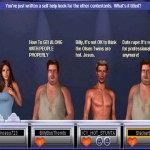
- Phonological Quirks: the Koopa Troopa’s Enigmatic Speech Patterns
- Syntactic Shenanigans: Unraveling the Koopa Syntax
- Semantic Surprises: Decoding the Hidden Meanings of Koopa Talk
- Pragmatic Peculiarities: Understanding Koopa Social Interactions
- Linguistic Evolution: Tracing the Transformation of Koopa Speech
- Comparative Koopology: Examining Dialects and Variations
Phonological Quirks: the Koopa Troopa’s Enigmatic Speech Patterns
Koopa Troopas, the iconic antagonists from the Mushroom Kingdom, possess a peculiar and enigmatic language that has fascinated linguists for decades. Their speech patterns are marked by a series of phonological quirks that distinguish them from other inhabitants of the Mario universe.
One striking feature of Koopa Troopa speech is the use of a heavily nasalized vowel system. Vowels are produced with a nasal resonance, creating a distinctive and muffled sound. This nasalization often obscures the underlying vowel quality, making it difficult to discern the exact words being spoken. Additionally, Koopa Troopas exhibit a strong tendency to elide consonants, particularly in clusters. This consonant reduction, combined with the nasalization, results in a speech pattern that is often slurred and difficult to understand. Despite these challenges, the Koopa Troopas’ language is remarkably consistent and rule-governed, with a clear internal logic that linguists are still striving to unravel.
Syntactic Shenanigans: Unraveling the Koopa Syntax
Delving into the syntactic labyrinth of Koopa speech, one encounters a peculiar set of rules that govern their communication. Koopa syntax exhibits a distinct penchant for ellipsis, the deliberate omission of words or phrases, rendering their speech concise yet cryptic. For instance, the utterance “Me name Bowser. Me king” conveys both the speaker’s identity and status in a single, abbreviated sentence.
Furthermore, Koopa syntax employs non-standard verb conjugations and irregular sentence structures. Verbs often appear in the present tense, regardless of the temporal context, and subject-verb agreement may be creatively interpreted. This linguistic quirkiness adds to the enigmatic charm of Koopa communication, creating a language that is both distinctive and challenging to decipher.
Semantic Surprises: Decoding the Hidden Meanings of Koopa Talk

Beyond their curious phonology and syntax, Koopa speech conceals a myriad of hidden meanings, adding depth to their enigmatic nature. The Koopa Troopa’s iconic phrase, “Koopa koopa,” for instance, serves not only as a greeting but also conveys subtle nuances. When uttered with a rising intonation, it expresses excitement or inquiry; a falling intonation denotes resignation or disappointment. Moreover, the frequency and duration of “koopa” repetitions can indicate the speaker’s emotional state, ranging from mild amusement to intense agitation. These linguistic intricacies add layers of complexity to Koopa communication, inviting us to decipher the unspoken subtext beneath their utterances.
Pragmatic Peculiarities: Understanding Koopa Social Interactions

Delving into the pragmatic peculiarities of Koopa social interactions unveils a fascinating tapestry of customs and idiosyncrasies. The renowned “Koopa Code of Honor” dictates a strict adherence to loyalty and respect within their ranks. When addressing superiors, Koopas exhibit a deferential tone, employing honorifics like “Commander” or “General.” They maintain a rigid hierarchy, with each member occupying a clearly defined role and authority level. Interestingly, Koopas also possess a unique form of non-verbal communication, utilizing subtle gestures and body language to convey messages and intentions. For instance, a raised tail could indicate aggression, while a lowered head might signal submission. These intricate social cues play a vital role in maintaining order and cohesion within Koopa society, offering a glimpse into the complex and often enigmatic world of these iconic antagonists.
Linguistic Evolution: Tracing the Transformation of Koopa Speech
**Linguistic Evolution: Tracing the Transformation of Koopa Speech**
Like any living language, Koopa Troopese has undergone a remarkable evolution over the years. The earliest recorded utterances of the Koopa Troopa date back to the Famicom era, where their speech was characterized by a limited vocabulary and a heavy reliance on onomatopoeia. The iconic “Koopa-Koopa!” battle cry, for instance, conveyed both the species’ name and their aggressive intent. As the series progressed, so too did the linguistic repertoire of the Koopas. The introduction of Bowser Jr. in “Super Mario Sunshine” brought with it a more sophisticated form of Koopa speech, complete with complex sentences and a wider vocabulary. The Koopalings, each with their distinct personalities, further enriched the linguistic tapestry of the Koopa kingdom. Today, the speech of the Koopas is a vibrant and dynamic reflection of their diverse culture and history. From the guttural utterances of the Goombas to the refined eloquence of Bowser, the language of the Koopas continues to evolve, adding new layers of complexity to one of the most iconic video game franchises of all time.
Comparative Koopology: Examining Dialects and Variations

Comparative Koopology: Examining Dialects and Variations 🗣️🌐
The Koopa Troopa language, spoken by the loyal foot soldiers of Bowser, exhibits remarkable diversity across the Mushroom Kingdom. Regional dialects vary significantly, reflecting the cultural and geographical influences of each Koopa clan. The Koopa Troopas of the Dry Dry Desert, for instance, have developed a distinctive guttural dialect adapted to their arid environment. In contrast, the Koopas of the Seaside Kingdom speak with a melodic lilt, influenced by the crashing waves and salty sea breeze. These dialects not only serve as a means of communication but also embody the unique identities of each Koopa community.


